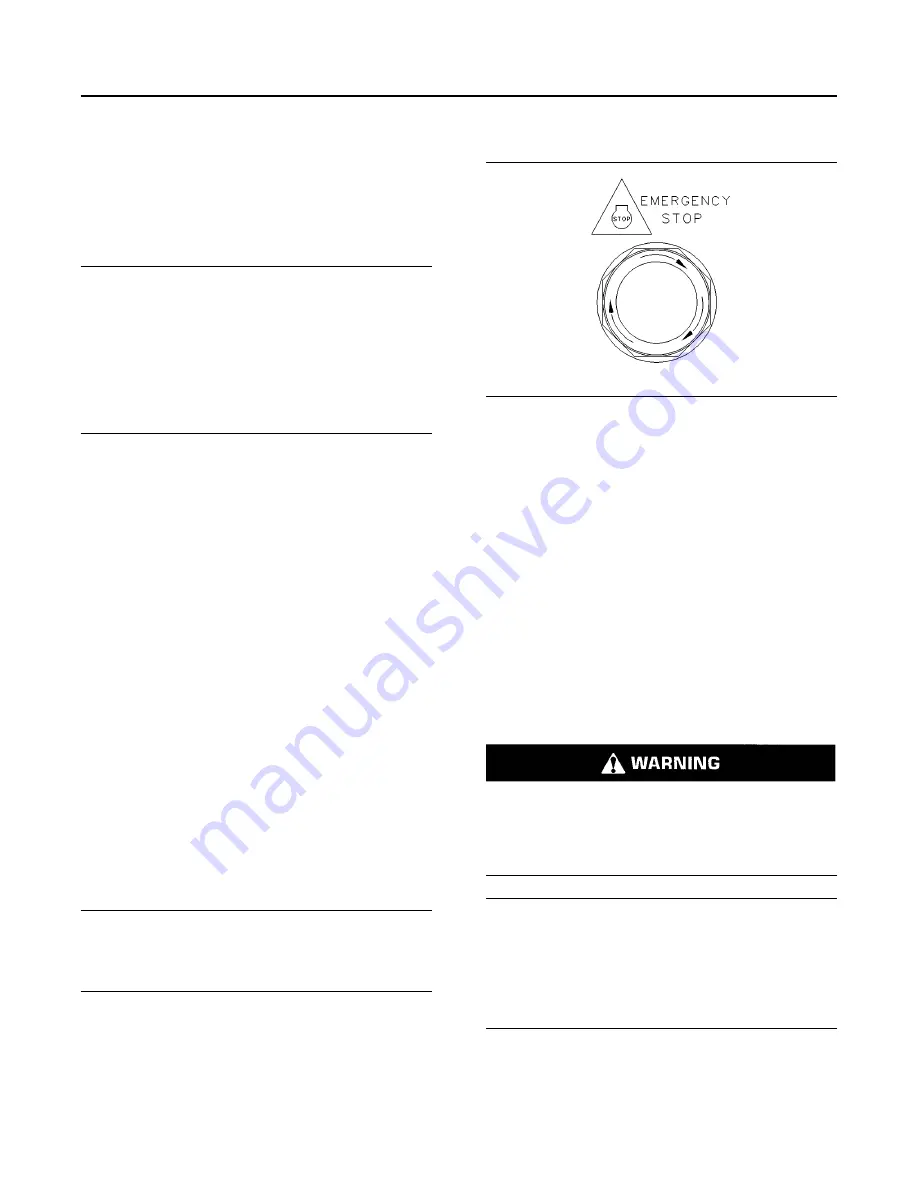
Engine Stopping
i05298681
Stopping the Engine
NOTICE
Stopping the engine immediately after it has been
working under load, can result in overheating and ac-
celerated wear of the engine components.
Avoid accelerating the engine prior to shutting it
down.
Avoiding hot engine shutdowns will maximize turbo-
charger shaft and bearing life.
Note:
Individual applications will have different
control systems. Ensure that the shutoff procedures
are understood. Use the following general guidelines
in order to stop the engine.
1.
Remove the load from the engine. Reduce the
engine speed to low idle. Allow the engine to idle
for 5 minutes in order to cool the engine.
2.
Stop the engine after the cool down period
according to the shutoff system on the engine and
turn the ignition keyswitch to the OFF position. If
necessary, refer to the instructions that are
provided by the OEM.
3.
Allow at least 2 minutes after shutting down the
engine before you turn the battery disconnect
switch to OFF. Disconnecting the battery power too
soon will prevent purging of the diesel exhaust fluid
lines after the engine is shut down.
i03554860
Emergency Stopping
NOTICE
Emergency shutoff controls are for EMERGENCY
use ONLY. DO NOT use emergency shutoff devices
or controls for normal stopping procedure.
Ensure that any components for the external system
that support the engine operation are secured after
the engine is stopped.
Emergency Stop Button
Illustration 29
g00104303
Typical emergency stop button
The emergency stop button is in the OUT position for
normal engine operation. Push the emergency stop
button. The engine will not start when the button is
locked. Turn the button clockwise in order to reset.
Refer to Operation and Maintenance Manual,
“Features and Controls” for the location and the
operation of the emergency stop button.
i05298684
After Stopping Engine
Note:
Before you check the engine oil, do not operate
the engine for at least 10 minutes in order to allow the
engine oil to return to the oil pan.
Contact with high pressure fuel may cause fluid
penetration and burn hazards. High pressure fuel
spray may cause a fire hazard. Failure to follow
these inspection, maintenance and service in-
structions may cause personal injury or death.
NOTICE
The low-pressure fuel system can be pressurized for
a time period after the engine has stopped operating.
The operating pressure of the low-pressure fuel sys-
tem can be 500 kPa (73 psi). The secondary fuel fil-
ters should be drained before any maintenance of the
low-pressure fuel system is carried out.
50
SEBU8731
Engine Stopping
Stopping the Engine
















































